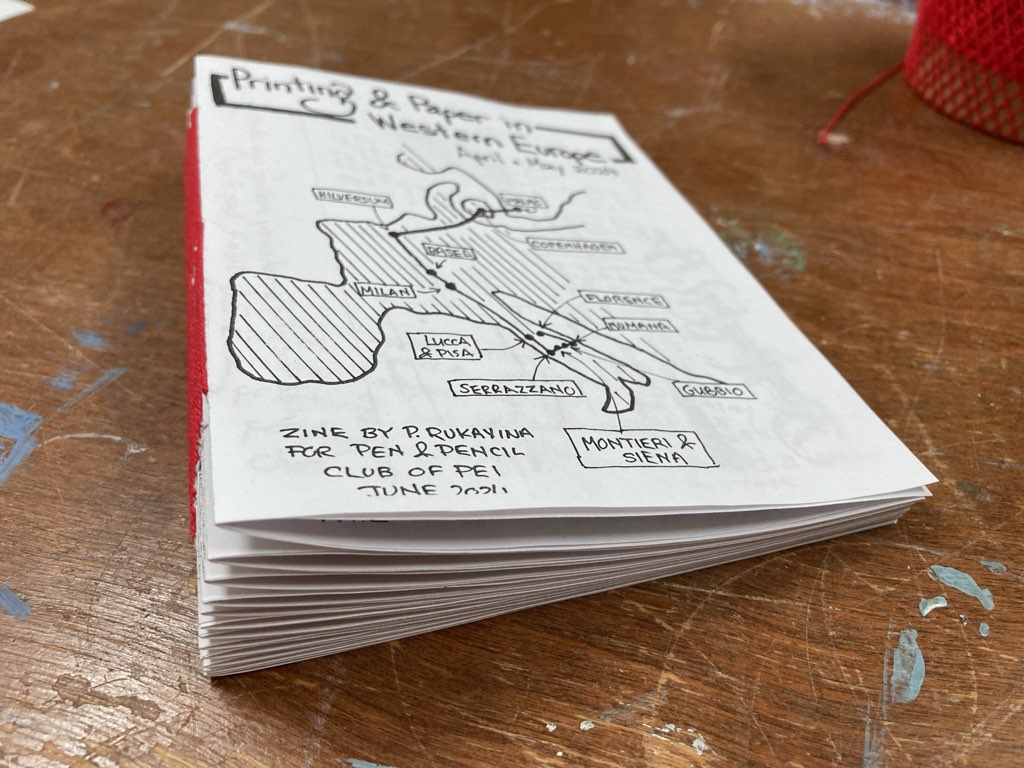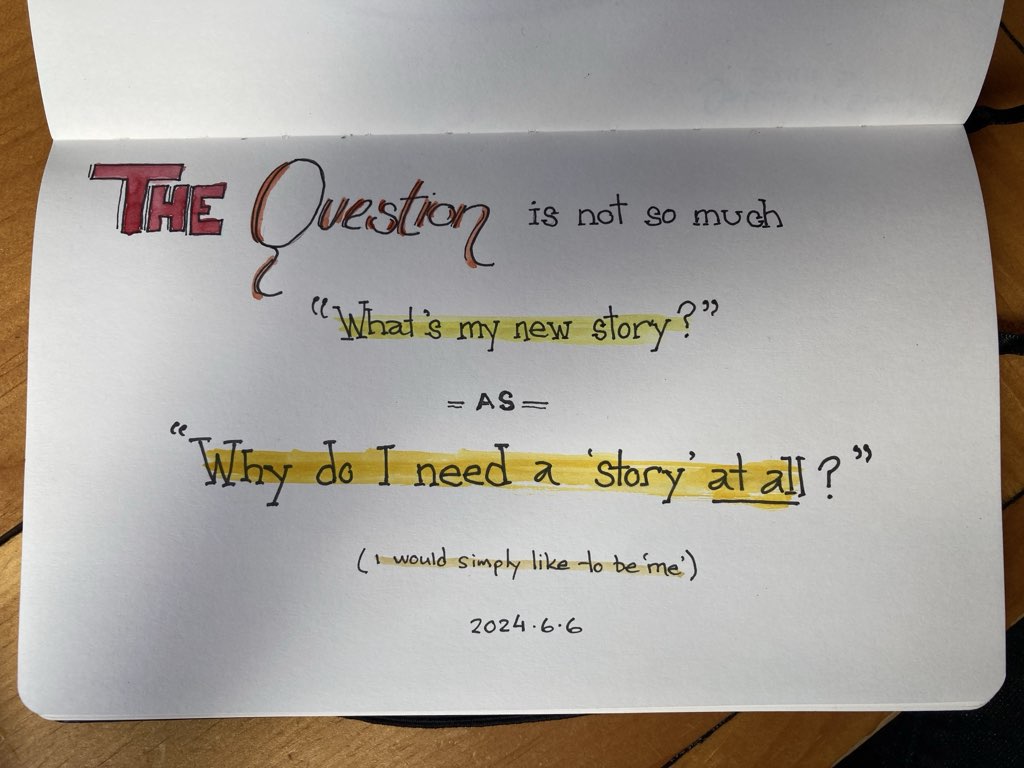Jenny Nicholson’s The Spectacular Failure of the Star Wars Hotel is an epic 4 hour video that I came to via the side door of a leadership coaching firm, which used it to frame a business allegory:
Jenny Nicholson’s epic “The Spectacular Failure of the Star Wars Hotel,” … breaks down in microscopic detail her visit to Disney’s Star Wars: Galactic Starcruiser … While it highlights a litany of problems with the hotel itself, the video can also be viewed as a diagnosis of the entertainment industry’s current ills writ large … And she does this against a backdrop of stuffed animals and while wearing various costumes, including, at one point, a giant suit resembling a Porg.
On the surface, this is a 20-part series about super-fans and the corporations who fail them. But under that, if you’re paying attention, is an MBA without any student debt. Here’s the wild part. We’ve been watching the video at 1x. It’s four hours long! And when we tried to put it at 1.25x, we had to slow it back down.
I’m 60 minutes in so far. Nicholson is a compelling screen presence, her research and level of detail is awe-inspiring, the story of the ill-fated “immersive hotel” is bizarre and interesting in all the right ways. The result is something that I can’t stop watching.
In support of our June This Box is for Good, Lisa and I created a grid of overlapping inks yesterday, to see how different ink colours, at different transparencies, interact with each other. I liked the result so much, I turned it into the wallpaper for my iPhone.
Here’s the original image if you’d like to do likewise.
Readwise, the startup that makes both my snippet-remembering and RSS-reading apps of choice, took itself to Norway for an offsite at the Juvet Landskapshotell.
From the section How much do we spend on offsites:
Candidly, we hesitated to write this retrospective because we feared it might give the false impression that we’re somehow living too large. The truth is that Readwise is a bootstrapped company that has never raised venture capital and therefore runs extremely lean. In fact, my cofounder and I worked on Readwise for three years before we paid ourselves a single dollar.
The reality is that two fun offsites per year costs us less than half of what we’d spend colocating year round in an office meaning we still save money relative to a traditional company.
In a former life, I worked in commercial real estate private equity investing exclusively in office buildings. As a result, the rules of thumb for how much money a typical company spends on office space (including extras like internet, furniture, and coffee) are etched into my brain. In a coastal city such as San Francisco or New York, the annual cost might start at $20,000 per employee before you layer in big tech extravagances such as catered lunches and stocked refrigerators.
Meanwhile, we spent a shade more than $4,000 per person on the Norway offsite, which is actually higher than average because it was set in Europe. In the Americas, we typically budget more like $3,000 to $3,500 per person. This results in approximately $7,500 per employee per year in offsite expenditures, or less than half what we’d be spending on an office in a tech hub.
Ultimately, however, it’s not about cost. Readwise as a company — that is to say, the team — simply wouldn’t exist as it does today without offsites.
Inasmuch as I’m a paying customer, I helped to cover the cost, and so I appreciate the report, and endorse the strategy.
Ranjan Roy in The Sweetgreen-ification of Society:
There has always been prevalent class stratification and social signaling. But we’re in this weird space where a confluence of user data, targeted marketing, labor trends and even supply chain innovation all work together to create an almost weaponized quinoa bowl. A company with the technical chops, branding resources, and a low interest rate influx of private capital can simply steamroll us with any retail concept. We’re no longer constrained to the Banana Republic-Gap-Old Navy trichotomy. Every facet of our daily consumer lives can now be hyper-segmented.
I love the phrase “Banana Republic-Gap-Old Navy trichotomy.”
From The Brooks Review, Elevate Your Travel: Why Checked Bags Are the Way to Go:
So I checked my bag. And then I did it again. And then again.
Checking a bag is travel magic.
You get the best of both worlds: the ability to pack nearly everything you want to pack while still only carrying a personal item onto the plane — albeit a much lighter personal item. Granted, none of this is new; this is how the air travel experience was initially designed to be. So instead of rolling your eyes at this less-than-novel approach, allow me to remind you how we all lost our damned minds being obsessed with personal item carry-on situations and instead should be embracing the checked bag.
I have been in the never-check class for a long time (although, for a time, travelling with a 65 pound service poodle, plus his gear, made this impossible). But the stress of whether or not there will be a place for a carry on above my seat (hint: there won’t be) is real, and the more I travel the more I realize that we should optimize out all the stress points under our control.
So perhaps I’ll become a bag checker?
As you know, this month is National Zine > PowerPoint Month in Canada1, the month every year where we replace PowerPoint presentations with handcrafted zines.
Tonight I’m presenting a show-and-tell about our printing and paper adventures in Europe in April and May, and it only made sense that I follow suit and replace a slide deck of photos of printing presses and boxes with a zine.
I decided this while in the print shop without a computer, so I went old school, and used only pen and ink, plus the Parish Hall photocopier, to make the entire thing.
If you’re free at 6:00 p.m. tonight (June 8, 2024), come by The Bookmark and get yourself a copy and hear to my presentation.
1. This is not true. I made it up.

I have been alternating between reading two books this week, Robin Sloan’s Moonbound and Maggie Smith’s You Could Make This Place Beautiful.
Both, as it happens, feature bees.
From Moonbound:
The elk turned and walked into the trees. The bees swirled around his antlers, and Ariel wondered if they were shouting goodbye.
My mind reeled at the implications of elk-bee politics. There, I thought, was a template for my partnership with the boy. Ariel was not as sturdy as the elk; I was not as useful as the bees. Not yet.
(“My mind reeled at the implications of elk-bee politics.” counts as one of my highlight sentences of 2024.)
From You Could Make This Place Beautiful:
Later, the Lowe’s truck arrived, and the man climbed out with his clipboard. By that time, the bees had gathered into what looked like a boiling beach ball in one of the honey locust tree’s bad elbows. I explained to the driver: “We’ve got a bee problem in the backyard, so please just leave everything on the side of the house so you don’t get too close. I don’t want anyone to get stung.”
And what he said next is something that, when I think of it now, makes me wonder about magic.
“I’m a beekeeper.”
Neither passage makes any sense out of context like this, but the appearance of the bees is an important inflection point in both books.
My copy of Moonbound, by the way, has come to me through some magic rip in space-time, as the book hasn’t been published yet. But my copy arrived at The Bookmark last week, and I’ve been reading it since. It feels both scandalous and appropriate to the time-gymnastics of the plot.
Yesterday I was on the phone with Clar. He was calling to update me on some developments in the Parish Hall (where my print shop sits in the basement).
At the end of the call Clar asked “How’s Olivia?”
What he was asking me was to bring him up to date, with an amount of detail that lay somewhere between “Well, this morning she got up and had breakfast…” and “She’s doing ok.”
Clar wanted me to update him on “the story of Olivia.” To distill, summarize, keep the plot going.
His question was no different than the same question asked many times a week by friends and familiars. What are you up to? How are you? What’s keeping you busy these days?
What’s your story?
I have been thinking a lot about story of late. I made this sketch yesterday, sitting in the coffee shop:

I’ve been meeting with a coach, a practitioner of “radical aliveness,” since September. It’s been very helpful, in ways I’ve not experienced before. At the start of every session he prompts me to settle into how I’m showing up, to take a breath and connect with what I’m feeling. Last week my answer was “exhausted,” and much of what we discussed for the hour that followed was how I feel a deep need for a break.
I spent the week that followed thinking about the question “a break from what?” and where I landed yesterday was “a break from needing to have a story.”
When I think about the book I published after Catherine died, what I see it as now is a chain of attempts to present a cogent updated story. Each chapter is an email update to friends and family, and in each update I sought to distill the essence of the health and treatment and options and cataclysmic events into some variation of “it’s okay, this is how things are now.”
So, August 5, 2016:
Catherine spent most of the day waiting for a 5 minute conversation to happen.
I won’t bury the lede: the 5 minute conversation, when it happened, was a good one; the MRI she had taken this morning showed no evidence of anything interfering with her spinal cord. Which means that fears of paralysis, or other neurological side-effects, are off the table.
Or August 6, 2019, three years later:
When I last wrote, in early July, Catherine had just that morning had a cycle of chemotherapy, and things were going relatively well. The week that followed was a challenging one, as that chemo packed a particular wallop, and Catherine was exhausted, in pain, and generally feeling like she’d been poisoned. Which, of course, she had been. Over time things got a little better for her, but it’s continued to be a hard month for pain management, and the oppressive heat hasn’t helped.
Like that, over and over, for almost 6 years. Every pithy update akin to sending out grappling hooks to the walls of the caverns we happened to find ourselves in.
It helped. Both me, in the telling, and those who received the updates.
But it was exhausting. Not so much the writing, which comes naturally, but in the conjuring up the description of the cavern and the grappling hooks, the sense-making. The storytelling.
After Catherine died, the book ended (with my eulogy for Catherine, the ultimate story, “This was Catherine”).
I kept conjuring stories, kept sending out grappling hooks. Widower. Grieving. Not grieving. Powering through grief. Getting help with grief. Caregiver. Single man. Dating man. Lonely man. Author. Father. Each got attached to a story, some of which I told here. And each story had to make sense, to be explainable, every feeling justified.
In her excellent book Why Not Me?, Barbara Want writes about entering into a new relationship soon after the death of her husband:
Why did I do it? I asked myself the question many a time. And I’m sure others wondered too. Was it wise to embark on a relationship so soon after my husband had died? Was I in a fit state to know what I was doing? Was it fair on R., to allow him to engage with someone whose emotions were pulped, whose thinking was at times irrational?
What nobody other than widows and widowers can understand is the enormous all-consuming weight, from within and without, reflected in that passage.
If you are compelled to conjure stories, the journey from bereaved onward is a minefield. Who am I? Who was I? Who do others think I am? Is this ok? Am I ok?
I’ve lived through it all. I know.
So I would like to stop.
I need a break from telling my story to myself.
I need a break from filling in the blank after “Right now I’m the kind of person who…”
I would simply like to be me.
This isn’t an easy thing to undertake: I’ve venerated the art of storytelling for so long, it’s so firmly entrenched a habit, that turning it off seems like cutting out a part of my brain.
What I’ve been gifted, through weekly sessions with my coach, however, is a taste of what it feels like to be free from it. To be present in a moment, without a need to explain it. To let feelings exist without needing to tether them to antecedents or solutions.
That feeling is delicious.
Hard to get to. Shaky-feeling.
But delicious.
Yes, thank you iPhone, I do want to delete this memory of a bedraggled version of myself, with horrible hair, and rumbled shirt, from the hard summer of 2016.

The people who are interested in talking about my challenging workout this morning: my coach; M. and S., who did the workout beside me; Lisa (because we tell each other about our workouts).
The people who are not interested: everyone else.
Like hearing how awesome the Gate of Heaven tour at the Duomo in Siena is, there are things that fall apart in the telling, experiences that are meant to be experienced, and not retold.
So consider this, kind reader, a note to myself.
This morning’s workout at Kinetic was described like this:
“MYMC 22.3 (FITNESS)”
15 ROUNDS FOR TIME
2 Jumping Chest to Bar
3 Thrusters (95/65)
6 Burpees
(Score is Time)
To translate this into human language:
- MYMC is “mid-year mini-comp,” described as “a 3-week mid-year challenge we run in the middle of the programming year.”
- We do 15 rounds of what follows. Our “score” is our time to complete all 15.
- Each “round” consists of:
- 2 “jumping chest to bar,” which is kind of like a “super pull-up.”
- 3 “thrusters,” with a barbell with a recommended weight of 95 pounds for men and 65 pounds for women.
- 6 “burpees,” which essentially involves throwing ones body to the floor and getting back up again.
Because everyone is different, we all adapt the workout to our real (or perceived) capabilities. In this case, I did a more aspirational than real ”chest to bar,” I did my thrusters with a 55 lb. barbell, and I did “up-downs” instead of burpees (up-downs are a more sedate, measured version, with less unrestrained flopping).
But this is not what I’m here to write about.
I’m here to write about a brief moment, in the middle of an up-down (oddly, the most taxing of the three movements for me), where I realized that the only way to finish 15 rounds was going to be to treat each and every movement as an accomplishment unto itself. I wasn’t going to get to the end by focusing on what I’d done, or how much was to come; all I could do is one up-down. Or one thruster. Or one chest to bar.
One.
And only then would I even begin to conceive of my next move.
In doing so, I found an unusual sense of “presence,” for lack of a better word.
This morning, unrelated, but also rather related, I read this in Against Optimization:
Another way to look at this is that you cannot optimize for resilience. Resilience requires a kind of elasticity, an ability to stretch and reach but then to return, to spring back into a former shape—or perhaps to shapeshift into something new if the circumstances require it. Resilience is stretchy where optimization is brittle; resilience invites change where optimization demands continuity. But whether we’re talking about our public infrastructure or our workplaces, our streets or our lives, it’s change we need to be ready for. Whatever is ahead for us, it’s not more of the same.
It seems like this sense of presence I describe, of being in the moment and reacting to conditions as they are in the moment, might be this “stretchy resilience.”
“Optimizing” my workout, which is how I started out this morning, was hearing my coach’s “you need to do one round every minute and ten seconds to finish with a good time” and then throwing myself into the (overwhelming, impossible, exhausting) workout all at once.
And it was exhausting: by five tick-marks on the whiteboard I was near-spent. I could no longer finish with an optimized attitude.
And so.
One.
Movement.
Just one.
And, only then, the next.
I finished.
I did the 15 rounds in 17 minutes and 30 seconds.
I am proud.
And I also feel like I’ve learned a much-more-broadly-applicable life lesson.
 I am
I am